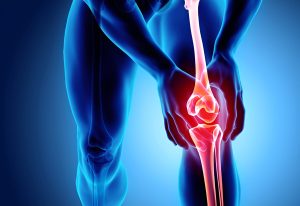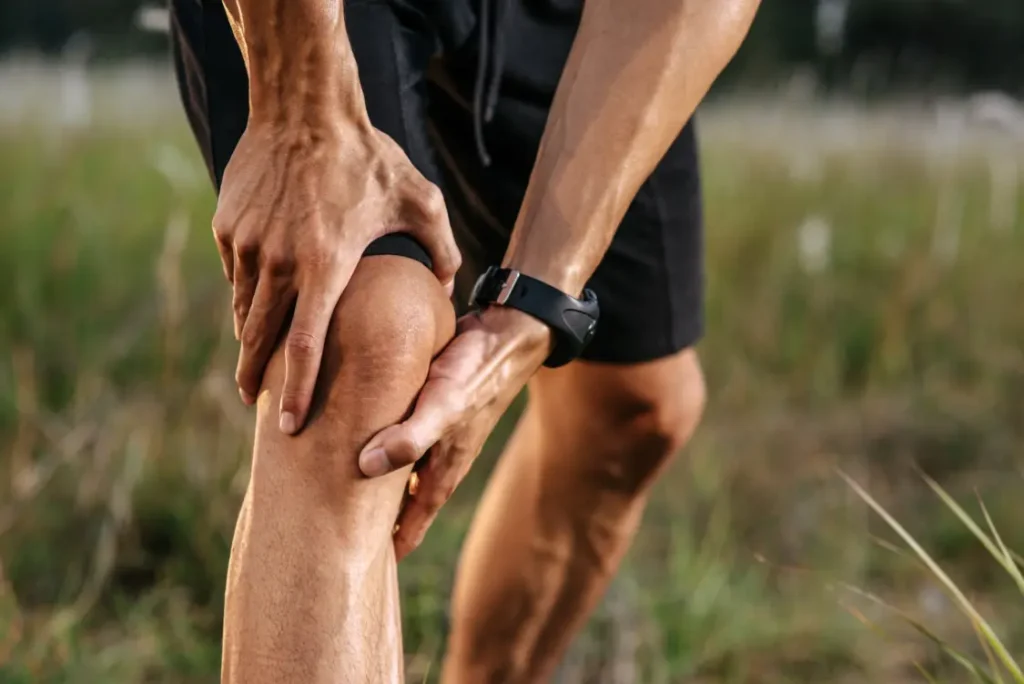What Is Patellar Tendonitis?
Patellar tendonitis, often called “Jumper’s Knee,” is an overuse injury that affects the tendon connecting the kneecap (patella) to the shinbone (tibia). The patellar tendon plays a key role in leg extension, allowing you to kick, jump, and run. Repeated stress can lead to small tears in the tendon, resulting in pain, inflammation, and weakness.
This condition is especially common in athletes involved in jumping sports, such as basketball, volleyball, and track & field.

Causes and Risk Factors
Patellar tendonitis develops over time due to repetitive stress and microtrauma. Contributing factors include:
-
Sudden increase in training intensity or frequency
-
Tight quadriceps or hamstrings, which pull excessively on the tendon
-
Muscle imbalances between the quadriceps and hamstrings
-
Improper landing technique during jumping
-
Hard playing surfaces
-
Inadequate warm-up or poor flexibility
Symptoms
-
Pain and tenderness at the base of the kneecap, especially during activity
-
Stiffness in the knee when getting up from sitting
-
Pain that worsens with jumping, squatting, or climbing stairs
-
Swelling or a thickened tendon in chronic cases
-
Weakness or difficulty with explosive leg movements
Diagnosis
Diagnosis is based on:
-
Physical exam: Tenderness over the patellar tendon and pain with resisted knee extension
-
Ultrasound or MRI: May be used to confirm tendon thickening, inflammation, or small tears
Treatment
Non-Surgical Options
-
Rest and activity modification: Avoid jumping and running until symptoms improve
-
Physical therapy:
-
Emphasizes eccentric strengthening of the quadriceps
-
Focus on flexibility of hamstrings and calves
-
-
Ice and anti-inflammatory medications for pain management
-
Patellar tendon strap or taping to reduce strain on the tendon
-
Biomechanical evaluation: Correcting alignment or footwear issues
Surgical Options (for chronic, non-responsive cases)
-
Arthroscopic debridement: Removal of degenerated tendon tissue
-
Open tendon repair: Rarely required and reserved for severe chronic cases
Recovery Timeline
-
Mild cases: Improve within 6–8 weeks with rest and therapy
-
Moderate to chronic cases: May take 3–6 months or longer
-
Athletes should complete a full rehab program before returning to sport
Preventing Recurrence
-
Warm up thoroughly before activity
-
Incorporate regular flexibility and strengthening exercises
-
Gradually increase training volume
-
Focus on proper landing mechanics
-
Use shock-absorbing footwear
Expert Care at Kerlan Jobe Institute
At Kerlan Jobe Institute, we take a sports medicine-centered approach to managing patellar tendonitis. Our orthopedic and rehabilitation specialists work together to help patients not only heal, but return to high-level function safely and confidently.

